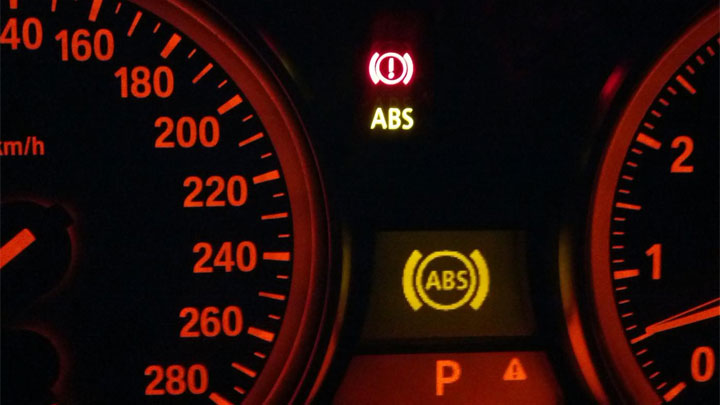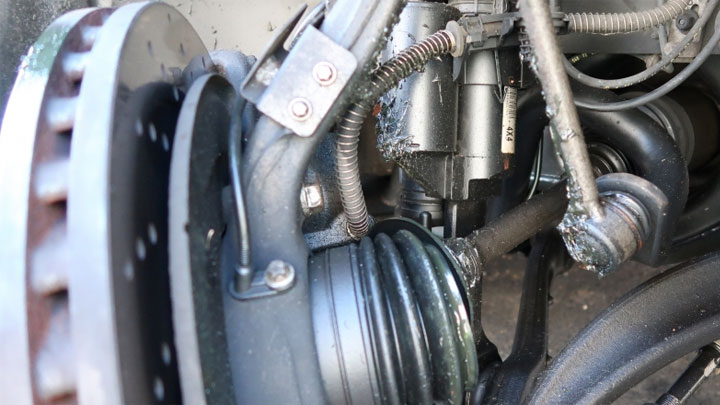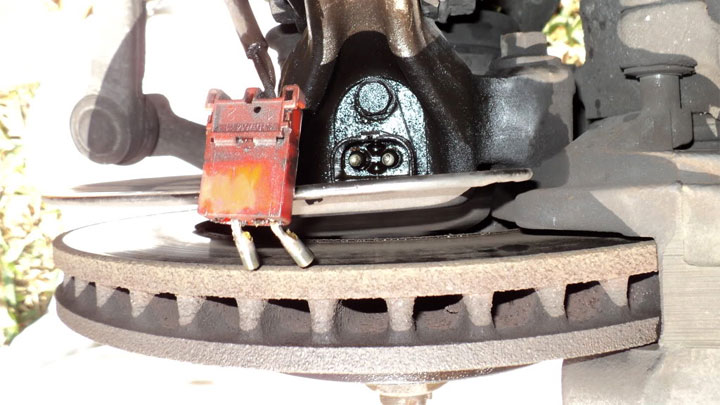C0035 Code (Symptoms, Causes, and How to Fix)
Chassis fault codes like C0035 indicate issues with steering, suspension, and brakes. C0035 points to an issue with a wheel speed sensor that can disable ABS.
Keep reading to learn the specific causes of a code C0035, what may happen if you continue driving, and how to fix it.

What Does Code C0035 Mean?
Diagnostic Fault Code C0035 relates to a left-front wheel speed sensor circuit malfunction. Simply put, a vehicle’s control module has determined that feedback provided by a vehicle’s left-front speed sensor is incomplete, irrational, or out of range.
As a result of these inaccuracies, the affected vehicle’s management software often disables the ABS function as a whole, to prevent inadvertent and untimely ABS actuation.
Feedback relayed by a vehicle’s individual wheel speed sensors is vital, as it allows a vehicle’s control software to log and interpret the speed of one particular wheel, in relation to its counterparts.
As such, judgments can be made in a bid to predict wheel slip and wheel lockup, thereby allowing automated measures to be taken as a means of negating such issues.
Traditionally, wheel speed sensors have come in two distinct varieties, active and passive.
- Passive sensors rely upon the creation of an AC voltage signal, which is magnetically induced when a vehicle’s wheels are in motion.
- Active sensors are supplied with a constant input voltage/ground, which thereby allows a variable signal to be relayed on a secondary circuit to quantify speed.
In the case of either sensor, feedback is produced and registered as the unit detects individual magnetic pulses from a hub-mounted tone ring. The teeth of this tone ring are evenly spaced, thereby causing feedback pulsations to increase in frequency as wheel speed increases.
Related: Code C0040, Code P0500, Code P0720
Symptoms of Code C0035

Diagnostic fault code C0035 is often accompanied by a host of secondary symptoms, some of which tend to be more troubling than others. Learning to recognize these symptoms can prove quite helpful when attempting to address the issue at hand.
The following are several of the most common symptoms associated with DTC C0035.
- Possible check engine light
- Illuminated ABS warning light
- Unexpected ABS actuation
- Inaccurate wheel speed data
See Also: Why Is My Speedometer Not Working?
Causes of Code C0035

Diagnostic fault code C0035 can be caused by one of several different underlying conditions, each of which must be addressed properly to reach a satisfactory conclusion.
Understanding these potential causes can provide you with a leg-up when striving to return your vehicle to service in the most expedited fashion possible.
The following are several of the most common root causes of DTC C0035.
- Left front wheel speed sensor failure
- Damaged speed sensor wiring
- Bad ABS module
- Damaged hub-mounted tone ring
Is Code C0035 Serious?
Diagnostic fault code C0035 is generally regarded as being quite serious in nature. This stems primarily from the fact that the presence of this code often renders a vehicle’s ABS system inoperable. While a vehicle’s standard brake function will be retained, stopping distances will be increased, under less than ideal circumstances.
Anti-lock braking is designed to provide rapid brake system pulsation, in a bid to prevent full wheel lockup. This is of significant value when forced to initiate a panic stop, or when attempting to stop rapidly in inclement weather. Anti-lock braking especially shines when stopping on ice or snow covered roads.
In any event, the root cause of a vehicle’s C0035 diagnostic fault code should be thoroughly diagnosed and repaired at the first available opportunity. Doing so will ensure that your vehicle’s ABS system is restored to full functionality.
If you do not feel comfortable tackling such repairs yourself, an appointment should be made with a trusted automotive service center as soon as possible.
How to Fix Code C0035

The following steps can be followed to assist in diagnosing and repairing the root cause of a vehicle’s C0035 diagnostic fault code. As always, factory specific service literature should be consulted for your particular vehicle, before attempting any such repairs.
#1 – Check For Additional DTCs
Before beginning the diagnostic process, be sure to check for the presence of any additional DTCs. Any such codes that are present should be thoroughly diagnosed before proceeding.
#2 – Perform Visual Inspection
Begin by carefully inspecting your vehicle’s left-front speed sensor and all associated wiring. The body of this sensor should not be damaged, nor should its connector. All pin connections within related connectors should be tight, and free of corrosion.
Additionally, all ABS wiring should be anchored in place, and free of breakage. ABS-specific wiring should not be repaired, but rather replaced in combination with the offending sensor itself.
#3 – Reset Sensor Air-Gap
If the prior inspection has presented no anomalies, the air-gap of the offending sensor should be checked. This can be done by simply applying light inward pressure to the body of the sensor itself while watching to see how deeply the sensor seats.
Ideally, this sensor should be seated within a nominal distance of the hub’s tone ring.
#4 – Verify Resistance
Resistance readings can also be taken at a vehicle’s speed sensor, to test integrity. Any reading taken should be compared to that specified by a vehicle’s manufacturer.
#5 – Take Functional Readings With Scan Tool or Oscilloscope
Finally, the integrity of the offending speed sensor should be verified through the use of an advanced scan tool or oscilloscope. The wave formations presented on such readings should be uniform, and without any stagnant periods in data delivery.
A failure during this phase of testing would likely indicate a faulty sensor.
- P0480 Code (Symptoms, Causes, and How to Fix) - Apr 19, 2024
- Car Temperature Gauge Stopped Working? (Here’s Why) - Apr 15, 2024
- Ignition Coil vs Coil Pack (What’s the Difference?) - Apr 8, 2024
